Bathrooms belong to wet rooms, in which electric shock even a small force may be deadly. Therefore, switches, sockets and other electrical installations in the bathrooms need to be installed according to the rules.
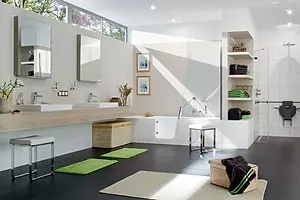
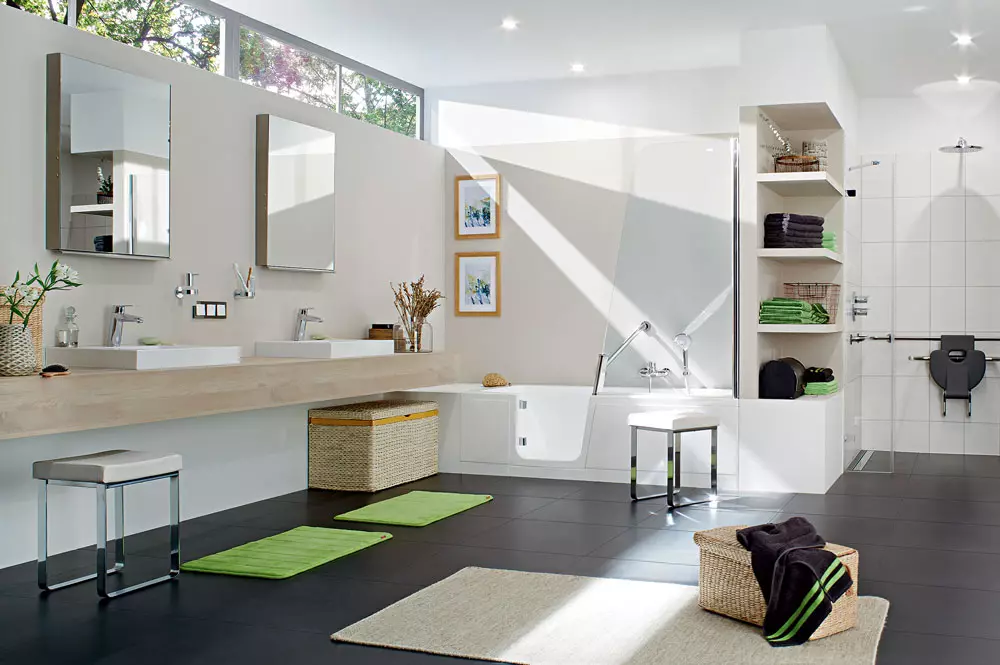
Photo: jung
According to the "Rules of the Electrical Installation Device" (PUE), the bathroom room is divided into zones 0, 1, 2, 3. Zone 0 is inside a bowl of a bath or a shower pallet. Zone 1 is called space above the zone 0. Zone 2 is a region of 60 cm wide, adjacent to zone 1. Zone 3 - volume limited to the outer surface of the zone 2 and a vertical surface that is located at a distance of 240 cm from her. In the height of Zone 1-3 reach 225 cm from the floor.
In the bathrooms of apartments, it is allowed to install plug sockets with a voltage of 220 in only in zone 3. And all the electrical installations must have a class of moisture protection not lower than 4. In practice, this means that the housing of the socket is able to resist individual splashes on it. Such sockets in the bathroom are supplied, in particular, protective curtains.
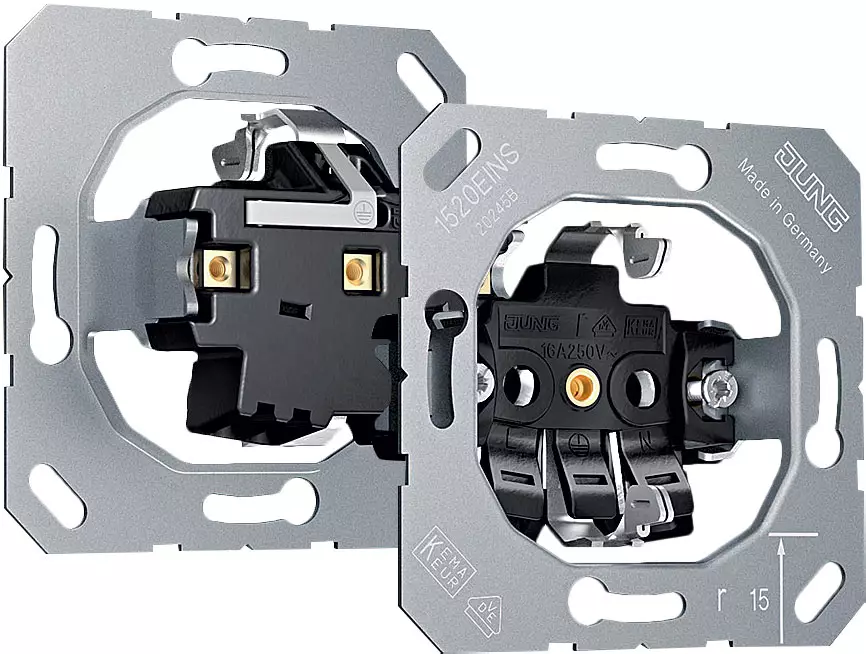
Photo: jung. The JUNG Schuko 1520 model is equipped with an improved mechanism. It is easier to install it, besides the rosette can be aligned when installing - for this purpose, special excavations are provided on the top of the JUNG Schuko 1520 enclosure. The lid of the sockets are fixed on unitary screws with PZ-Slots, and the side slits allow you to install it smoothly
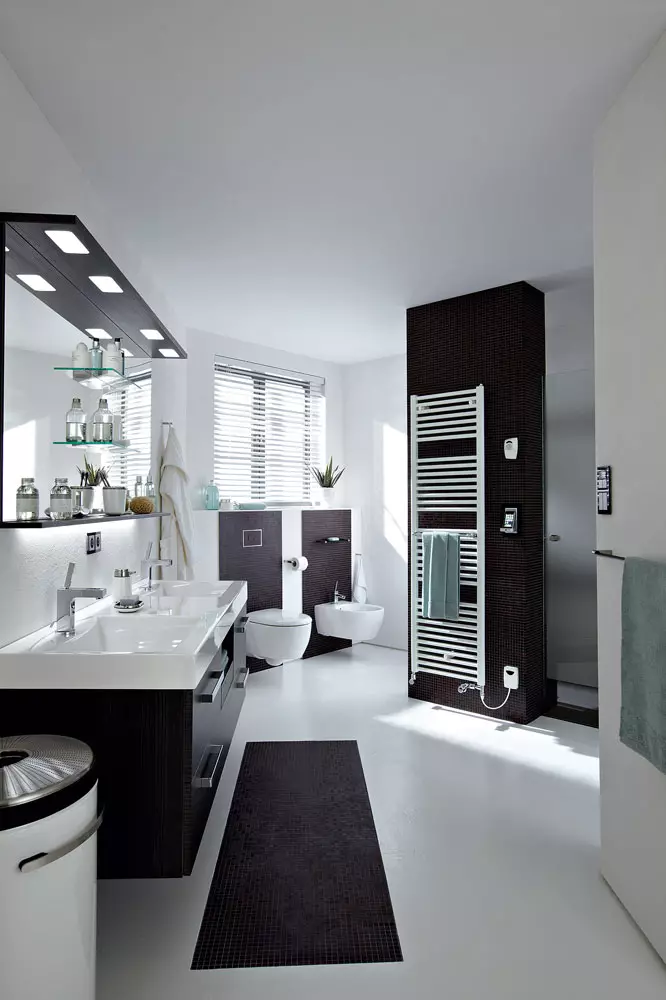
Photo: jung. Wiring accessories (even with the degree of protection IP 44) should be placed so that water splashes do not fall on them
Any switches and plug sockets must be located up to 60 cm from the doorway of the shower. All electrical installations should be connected to the network through separation transformers or be equipped with a protective shutdown device (UZO) responding to the differential current, which does not exceed 30 mA. In practice, UDO is usually used, since the separation transformers are less convenient. Transformers are typically used to connect electrical equipment of low power (50-100 W).
For instruments with a capacity of 2-2.5 kW, a separation transformer of solid sizes will be required, weighing 15-20 kg; Its cost can reach several tens of thousand rubles. Household UzOs are designed for different leakage current (10 and 30 mA). It is best to use one uro with a lot of leakage current to connect and protect the entire apartment, additionally providing separate lines of the power grid in a bathroom with several units of less power (for example, one for washing machine, another for a socket, third for the lighting line).
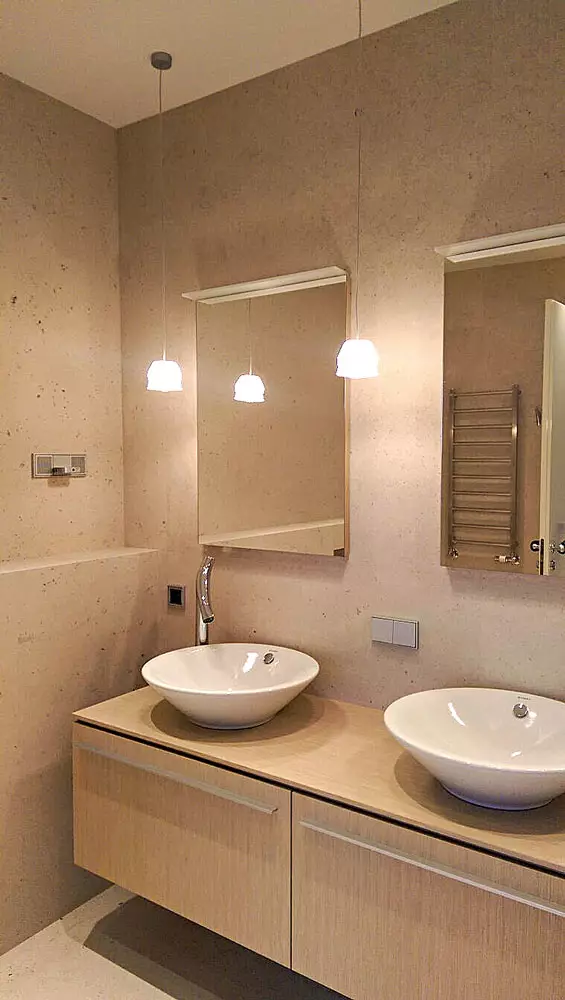
Photo: Salon "Lamps, small orders 39". For the equipment of the socket unit, models of sockets with protective curtains were selected, which close the plugs when the device does not use
Plug sockets for the bathroom are in the collections of almost all manufacturers of electrical installation products. For example, in the Schuko line of Jung, a model with a folding lid (with a return spring) and protection against touching the conductive elements is presented. And when applying an additional sealing membrane, the degree of protection of the IP 44 is achieved. The sockets are necessarily connected along a three-cable cable, a single-core cable is laid for an additional equalization of potentials (safety requirement for premises with high humidity). The device is grounded by a third residential cable (yellow-green) connected to the grounding contact of the mechanism. Use a two-wire cable network in bathrooms is unsafe.
Denis Filatov
Leading engineer-designer of buildings automation systems, Lighting company VIRT
